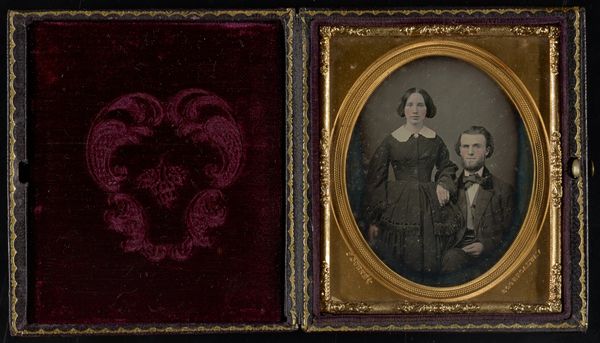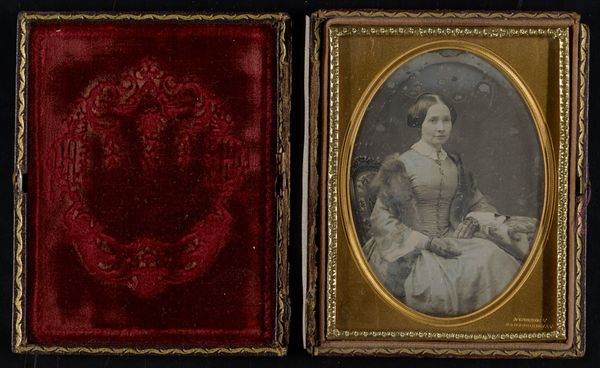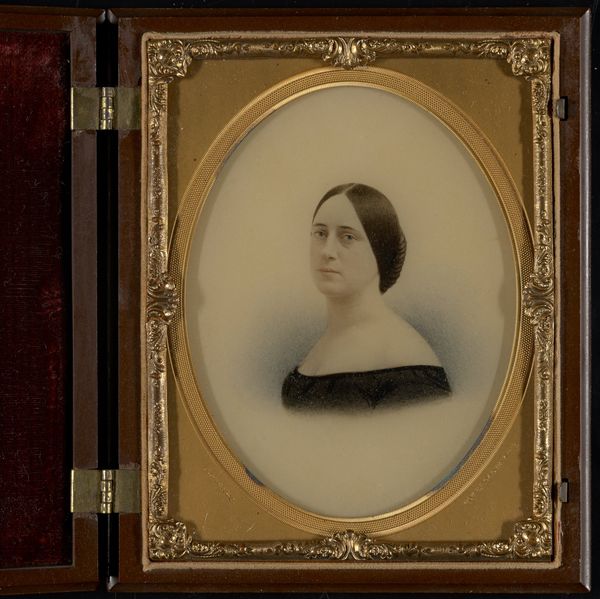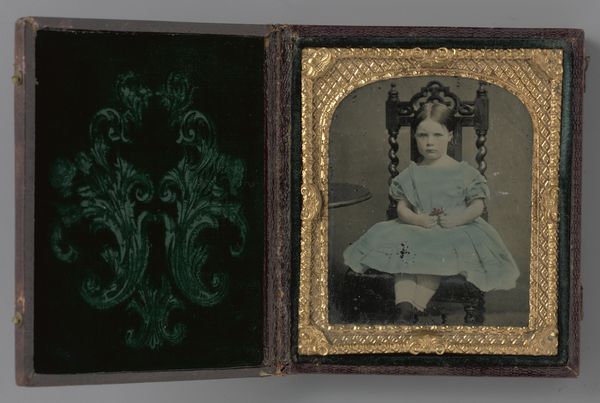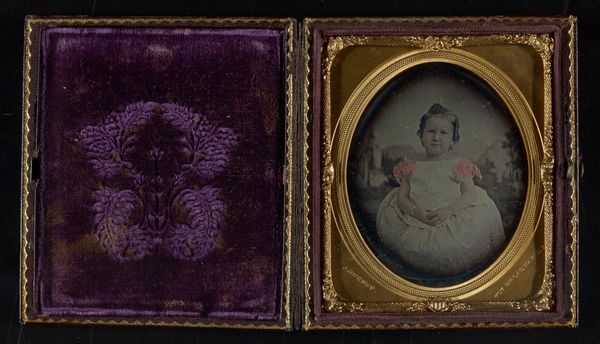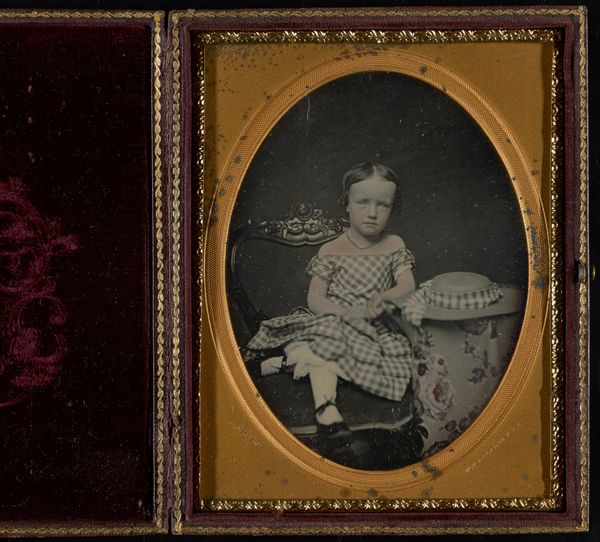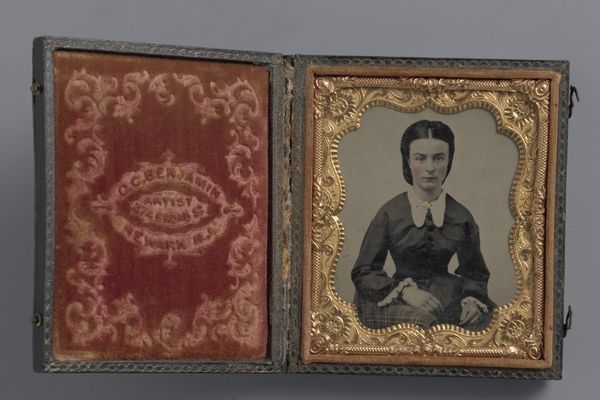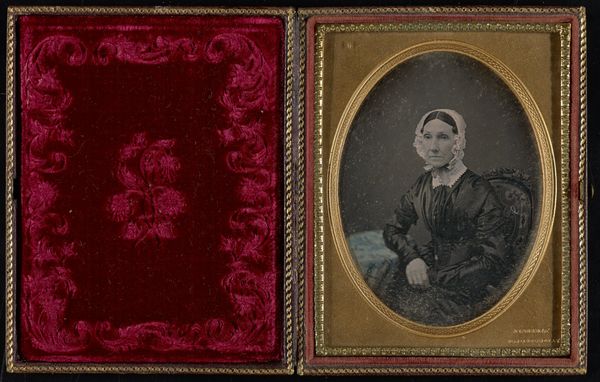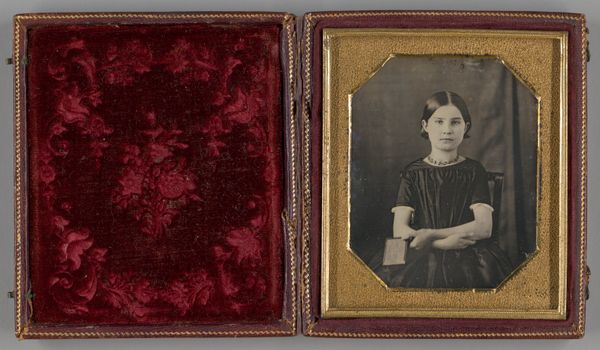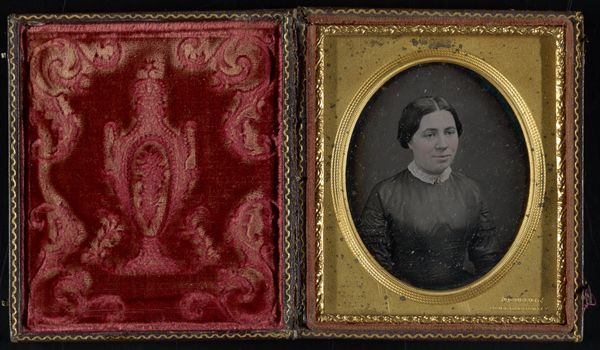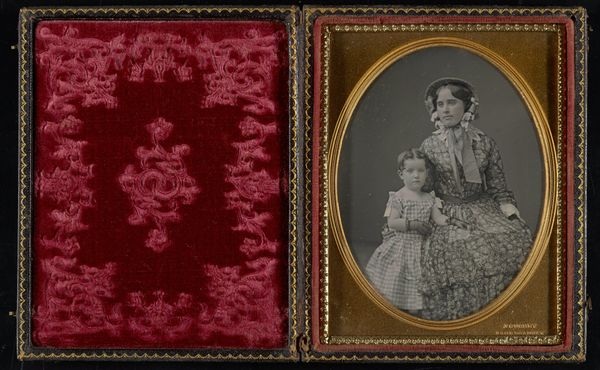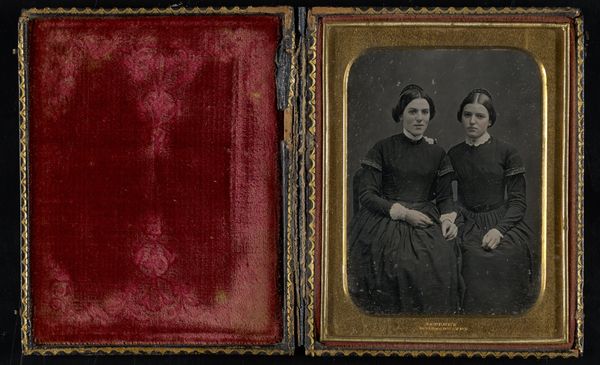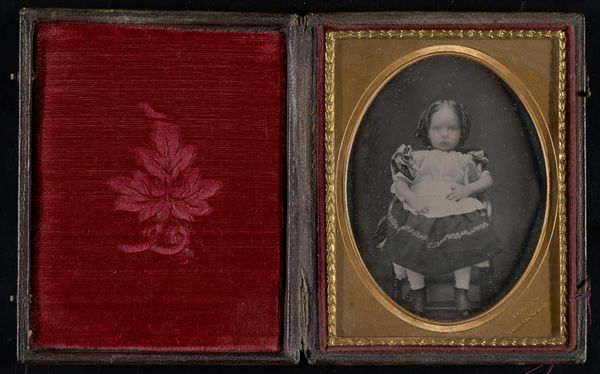![Untitled [three-quarter length portrait of a young girl] by Jeremiah Gurney](/_next/image?url=https%3A%2F%2Fd2w8kbdekdi1gv.cloudfront.net%2FeyJidWNrZXQiOiAiYXJ0ZXJhLWltYWdlcy1idWNrZXQiLCAia2V5IjogImFydHdvcmtzLzJkMDMwMWZmLTZmYmEtNDEwZS05ZWMyLTA2MDQ3NWMwMjgyZC8yZDAzMDFmZi02ZmJhLTQxMGUtOWVjMi0wNjA0NzVjMDI4MmRfZnVsbC5qcGciLCAiZWRpdHMiOiB7InJlc2l6ZSI6IHsid2lkdGgiOiAxOTIwLCAiaGVpZ2h0IjogMTkyMCwgImZpdCI6ICJpbnNpZGUifX19&w=3840&q=75)
Untitled [three-quarter length portrait of a young girl] c. 1844 - 1852
0:00
0:00
daguerreotype, photography
#
daguerreotype
#
photography
#
romanticism
#
united-states
#
genre-painting
Dimensions: 4 1/4 x 3 1/4 in. (10.8 x 8.26 cm) (image)4 5/8 x 3 5/8 x 3/4 in. (11.75 x 9.21 x 1.91 cm) (mount)
Copyright: Public Domain
This is a daguerreotype portrait of a young girl, made by Jeremiah Gurney, likely in the mid-19th century. This photographic process, one of the earliest, involved coating a silvered copper plate with light-sensitive chemicals. The plate was then exposed in a camera, capturing a direct positive image. Notice the meticulous detail, achieved through careful preparation and long exposure times. Daguerreotypes were luxury objects: the materials expensive, the process laborious, and the result often a unique, treasured possession for the sitter and their family. The girl’s formal attire and the upholstered chair suggest a middle-class or upper-class background. The daguerreotype itself acted as a social marker, evidence of a family's status and their participation in modern technology and consumer culture. Considering the historical context of labor and class, this portrait encapsulates the aspirations and values of a rapidly changing society. It invites us to reflect on the relationship between photographic technology, social identity, and the democratization of portraiture.
Comments
No comments
Be the first to comment and join the conversation on the ultimate creative platform.
